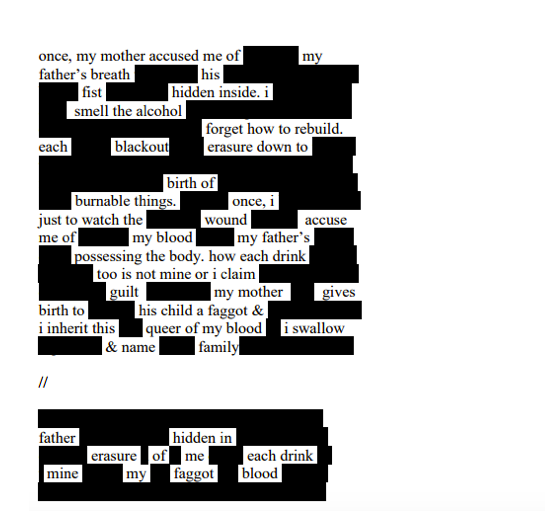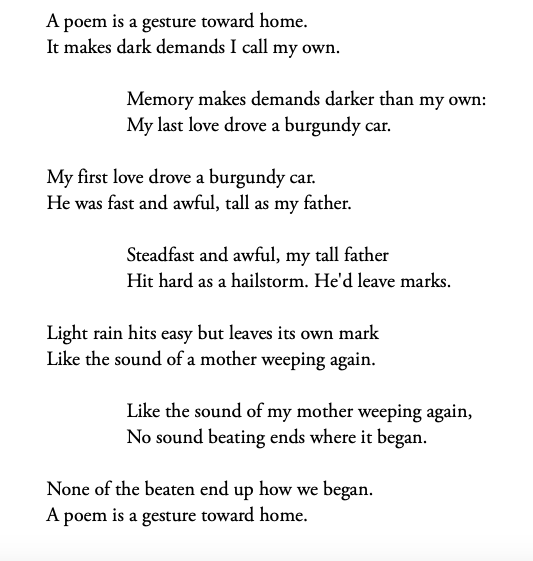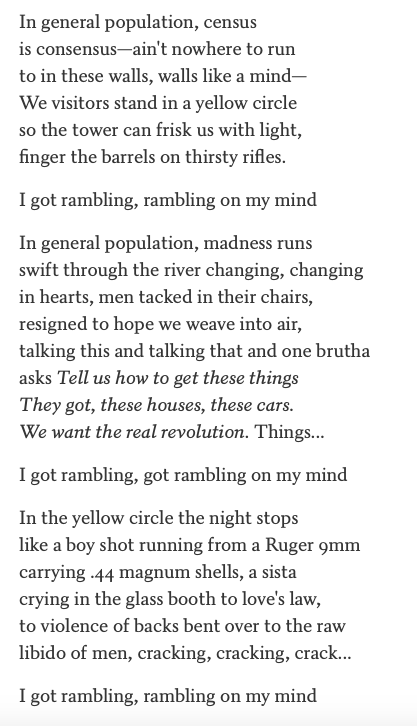
Burning Haibun, Duplex, and Bop: these contemporary forms are a fresh way to jumpstart your creative spark.
You’ve probably heard that writing poetry in form is good for you—even if you don’t always love doing it. Trying new poetic forms can get you out of a writing rut, help spark surprise in your writing, and give your creativity a jump start. The self-imposed constraints of form can help poets innovate, forcing writers to delve into words, phrases, and ideas that might not be their first choice, or the first impulse. But you don’t have to stick to just sonnets and villanelles—here are three contemporary forms that are fresh, exciting, and perfectly suited to the current poetry zeitgeist.
The Burning Haibun
This gorgeous and evocative form created by torrin a. greathouse pulls from the prosaic traditions of haibun poetry and infuses the form with the verve of erasure poetry. In the Burning Haibun, you will create a three-part poem, or a tryptic: a prose poem, a verse poem, and a haiku. Each new part of the poem is created from the previous part, using erasure to make something new. You can start by writing your own prose poem; try using some of the strategies of traditional haibun: precise, detail-heavy prose, with attention to sensory description, written in the present tense. Next, you will create an erasure from your own prose poem, blacking out your prose text to create a new poem in verse form. Finally, you will black out parts of your verse poem to create a haiku. Playing between the expansiveness of prose poetry and the concise concentration of haiku, the Burning Haibun is a form that will upend your own expectations for your writing, requiring you to make something new and new again from your own first impulses. Here are the steps:
Begin by writing a prose poem.
Use erasure & blackout text to create a verse poem from your original prose poem.
Then, use erasure and blackout text again to create a haiku from your verse poem.
Check out torrin a. greathouse’s Burning Haibun:

(Image from Frontier Poetry)
And check out this stunning example from Angelique Zorbitz as well:


(Image from Women’s Voices for Change)
The Duplex
Pulitzer-prize winner and author of The Tradition, Jericho Brown created the Duplex, a form that consists of two-line stanzas that repeat and echo each other. Pulling from the ghazal, the sonnet, and blues, the repetition required in this form can create tension and pressure, forcing you to make sure each phrase and image really works (since you will have to repeat each one). This form will also get you to think outside of your own immediate impulses, since the repeating lines force you to take your own images or imagery and pivot to use them in a second context. Here’s how you create your own:
Begin with a couplet. The Duplex is made up of seven stanzas, and each stanza is a couplet (two lines), creating a 14-line poem.
Let each line have 9-11 syllables each.
Echo the first line in the last line
Echo the second line in the third line
Echo the fourth line in the fifth line
etc.
Echo the first line in the last line
Here is one of Jericho Brown’s own duplexes as an example:
Duplex
by Jericho Brown

(Image from the Poetry Foundation)
The Bop
Created by Afaa Michael Weaver, the Bop also has some sonnet-like qualities, in that each stanza has a particular role in the trajectory of the poem. In the Bop, each stanza ends with a repeating line, or refrain; this repetition creates a song-like quality that can enhance or emphasize the mood of the poem.
To try your hand at this form, you will need to think of a poetic argument.
The first stanza will be six lines long, and this first stanza presents the problem.
Next, include your one-line refrain. Make it strong, since you will have to repeat it!
Then, the second stanza, eight lines long, will explore or expand the problem.
Time for the refrain again!
Finally, the third stanza, six lines like the first, will resolve the problem, or it will grapple with failure of resolution.
Last but not least, end with that refrain that echoes or repeats itself.
Read one of Afaa Michael Weaver’s Bop poems for inspiration.
Rambling
by Afaa Michael Weaver
in lewisburg federal penitentiary

(Image from Poets.org)
Want to learn more form poems, or try your hand at different types of forms? Check out Tell Tell Poetry’s Hone Your Craft course to find out how form can take your writing to fresh and exciting places.





Comments (0)